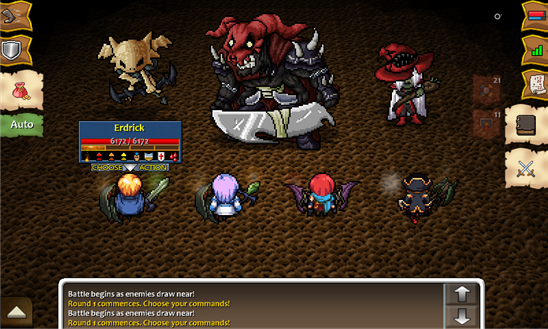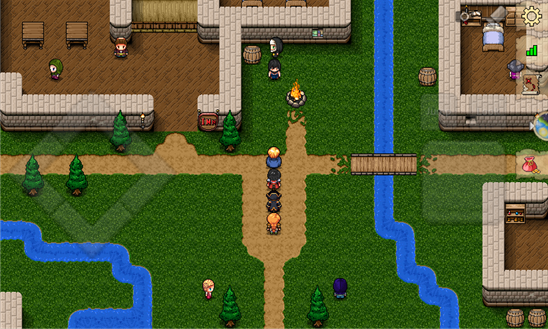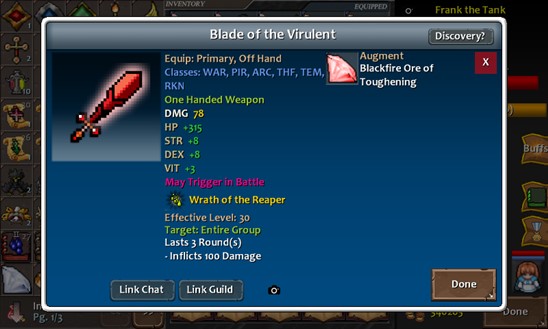What excites you the most about Windows 8.1?
“[Using universal apps] frees me up to release new game content more frequently and to spend more time monetizing my work.”
Universal apps are the biggest thing to happen for Windows—or any mobile developers, really—in a while. I am an independent developer, so I don’t have a team, and I don’t have a lot of time. Publishing an app to multiple platforms used to take me months, and now, by building a universal app, I can build the game once, and almost immediately, I can publish it to any platform. I don’t even have to worry about varying screen resolution because Windows 8.1 takes care of that for me. This is huge.
After I publish the app to multiple platforms, I don’t have to manage updates for each of them; I release an update once, and it’s everywhere—instantly. That frees me up to release new game content more often and to spend more time monetizing my work.
And I think the platform provides the best user experience there is; native support for DirectX provides a huge advantage over competing platforms and is, I think, under-appreciated by users and developers alike. The DirectX Tool Kit lets me do more with less effort and fewer resources—thanks to Windows 8.1.

Talk to us about your monetization strategy. How much money have you made on your games?
“Now, with 8.1, I’ll be able to use the new Ad SDK to implement ads more dynamically and add in-app purchase opportunities.”
I earn most of my revenue from ads. Although I offer paid, ad-free versions of my games, my ad-based revenue is high because I design my games to be played for many hours at a time. For example, Dragon’s Blade and Dragon’s Blade II, respectively, contain approximately 100 hours and 60 hours of storyline gameplay. And the online versions of both contain added-value play time; most players will play for hundreds of hours, so that generates significant ad revenue.

I began developing for Windows in 2012 and generated about $58,000 in revenue that first year, $102,000 the next. I’ve been studying monetization strategies and patterns over the past three years, and I’ve noticed that there are seasonal ups and downs. So far, I haven’t been able to address that, but now, with 8.1, I’ll be able to use the new Ad SDK to implement ads more dynamically and add in-app purchase opportunities.
Money is important, but so is being satisfied with what you do and being stimulated in your work; these things help me to make a successful app, and connecting to other developers in the Windows community also helps. I enjoy connecting with my customers and incorporating their suggestions into my ongoing development; Windows has a great user base that will engage with developers, and this means that I have not built the game by myself in a silo, and my users feel more connected to me and my game. Building a community on Facebook has also been super important. I have thousands of followers for my first game, and I keep the page active. But no matter how much you talk to your users, nothing can substitute for building an excellent game.
Which features on Windows 8.1 do you intend to take advantage of?
“[The Action Center is] a great way to engage users all the time.”
The Action Center on the phone is really exciting, and I will use it in The Arena. I plan to integrate the Action Center into the core social aspects of the game, meaning you’ll get a notification if you’re offline and somebody in the game wants to contact you. It’s a great way to engage users all the time.
I’m also excited about the Live Tile improvements. In WP7, Live Tiles were a real pain to use—doing so required a lot of steps. Now, instead of displaying a generic title, I’ll use Live Tiles to show players the last-played game, including a dynamically-created image that will capture what the player was last doing when he or she last played. So players will be able to quickly jump right back into the game.
Even better than the Action Center and Live Tiles, , is the new and improved Wallet experience. Wallet is at the core of my monetization model in the new game and it is going to let me integrate my IAP monetization model; I am so grateful that it is built into the platform.
Finally, I am also exploring the ability to use Bluetooth to pair the phone with the PC or tablet and use the phone as a controller.

What is your advice to developers?
“Wanting to be a developer is easy. Setting yourself apart from the millions of others who want the same thing takes initiative and hard work.”

A lot of my players want to create games themselves. They all have one big hang up: they all believe they can take a class or major in something and they will become game developers if they just follow the path of least resistance. I talk to high school students who don’t have any plans to start learning about game development until they reach college and the path is laid out for them. My advice to them is to take initiative beyond classes. You don’t have to wait for college to start learning how to program. A lot of the best programmers are largely self-taught. So read books and online tutorials. Books can teach you everything you want to know; it’s never too early to start. Practice making smaller scale games. Practice everything. Try new things. Wanting to be a developer is easy. Setting yourself apart from the millions of others who want the same thing takes initiative and hard work.
Follow Dragon’s Blade 2 on Twitter – https://twitter.com/dragonsblade2
Beta testing for The Arena is open to anybody at: http://dragonsblade.co/beta. Get involved.
